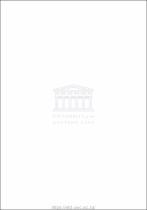| dc.description.abstract | The study of sound symbolism, phonetics and semantics has been of major concern for linguists since the Greeks and the Romans in the fifth century before AD. The idea of sound symbolism - the existence of correspondence between the sound of letters (or linguists, such as Ibn Jinni (942-1002 AD), and modern Arabic linguists, including al- Badráwi (1999), and Na'aim Alwia (1984), have attempted to elucidate this phenomenon, providing detailed description and some examples from Arabic and the Holy Qur'an. Modern Western linguists such as Magnus (1999) have discussed the correspondence between the sounds of letters and the sense in Western languages. Jespersen (1962) and
Badráwi (1999) have recommended that this phenomenon needs further detailed study and have indicated the need of more examples to be used as reference theory. Using Ibn Jinni's model, this study is an attempt to build on the theory of the correspondence between sound and meaning using the Holy Qur'an as an example. While Jinni's focus was on the correspondence of sound and meaning at the word level, this
study will focus on the individual sound segments within the word, and the effect of the word within the Surat. The argument is that it is the individual distinctive features of each phoneme in a word that give the word its distinctive sound quality, and also has have an impact on the meaning of the word. Any correspondence between sound and meaning in a word should therefore be assigned to a particular significant distinctive feature. Given that the focus on the presumed direct relationship between sound and meaning, recourse will be made to the principal of onomatopoeia. Therefore, the objective of this study is to investigate the relationship between the distinctive features of the sounds that form Arabic words and the meaning of such words as used in the Holy Qur'an. In particular, the study will analyze the distinctive features, such as a sound being a consonant or a vowel, voicing, manner and place of articulation, airstream mechanism, among others
(singly or combined) of the sounds in Arabic words, and relate this to the meaning of the words. This phenomenon will be investigated using descriptive methods and the Holy Qur' an as the object of study. | en_US |

